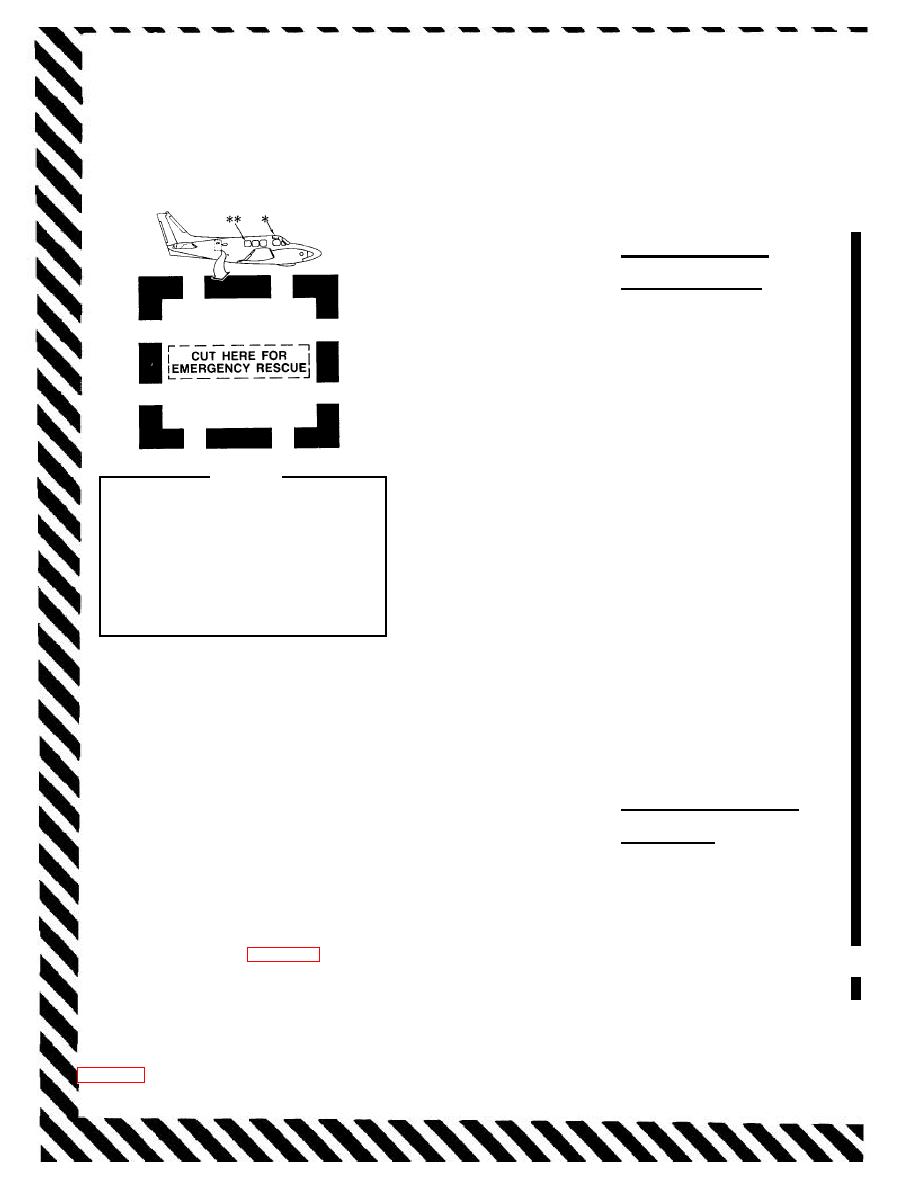
TM 55-1510-215-10
(1) Engine malfunction during takeoff run
*TO
REMOVE
THE
COCKPIT
(abort). Below takeoff airspeed (Vlof), use the
EMERGENCY
ENTRANCE/EXIT
following procedure:
HATCH FROM OUTSIDE, TURN
PROTRUDING EXTERNAL LATCH
NOTE
HANDLE AND LIFT AWAY RELEASED
DOOR.
Single-engine reversing may be applied if
required. Use extreme caution if takeoff
surface is not hard and dry.
1. POWER levers - IDLE.
2. Braking - As required.
NOTE
Braking action is impaired if wheels are
allowed to skid.
NOTE
If insufficient runway remains
for
stopping perform steps 3 through 5.
3. CONDITION
levers - FUEL
NOTE
CUTOFF.
** EMERGENCY ENTRANCE MAY
ALSO BE MADE BY BREAKING IN
4. Firewall
Shutoff
valves
-
THE WINDOW ON THE CABIN
CLOSED.
EMERGENCY EXIT HATCH (FIRST
5. MASTER SWITCH - DOWN.
LARGE SQUARE WINDOW SECTION
FORWARD OF THE CUT HERE FOR
(2) Engine Malfunction After Liftoff.
EMERGENCY RESCUE AREA) AND
Engine Malfunction After Liftoff. If an engine fails
ACTUATING THE HATCH RELEASE
after becoming airborne, maintain single-engine best
MECHANISM.
rate-of-climb speed (Vyse) or, if airspeed is below
AV 095259
(Vyse), maintain whatever airspeed is attained
between liftoff (Vlof) and (Vyse) until sufficient
Figure 9-2. Emergency Entrance
altitude is attained to trade altitude for airspeed and
accelerate to (Vyse).
characteristics during single-engine operation as
long as airspeed is maintained at or above minimum
(3) Engine malfunction after liftoff (abort).
control speed (Vmc) and stall speed (Vs). Minimum
Perform the following and land in a wings-level
control speed is the minimum airspeed for which
attitude:
lateral and/or directional control can be maintained
with the flaps retracted, dead engine propeller
1. POWER levers - REDUCE.
feathered, live engine set to takeoff power and 5
maximum bank angle maintained towards the live
2. Gear - DOWN.
engine (landing gear UP or DN). The capability of
the aircraft to climb or maintain level flight depends
3. Complete normal landing.
on configuration, gross weight, altitude and free air
NOTE
temperature. Performance and control will improve
by retracting the landing gear (if extended) and
If able to land on remaining runway
establishing the appropriate single-engine best rate-
check gear down, use brakes and reverse
of-climb speed. Refer to chapter 7 for single-engine
thrust as required.
climb performance.
(4) Engine malfunction after takeoff. If an
engine malfunctions, after becoming airborne, and
b. Engine Malfunction During and After Takeoff.
best single-engine climb speed has been attained,
The action to be taken in the event of an engine
proceed as follows:
malfunction during takeoff depends on whether or
not takeoff speed has been attained. Refer to
9-4 Change 7

